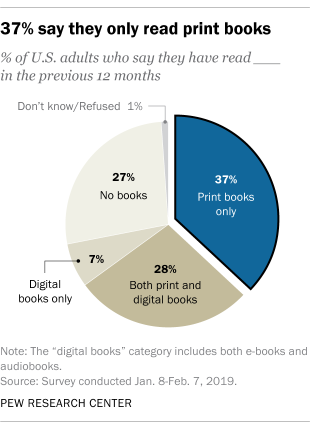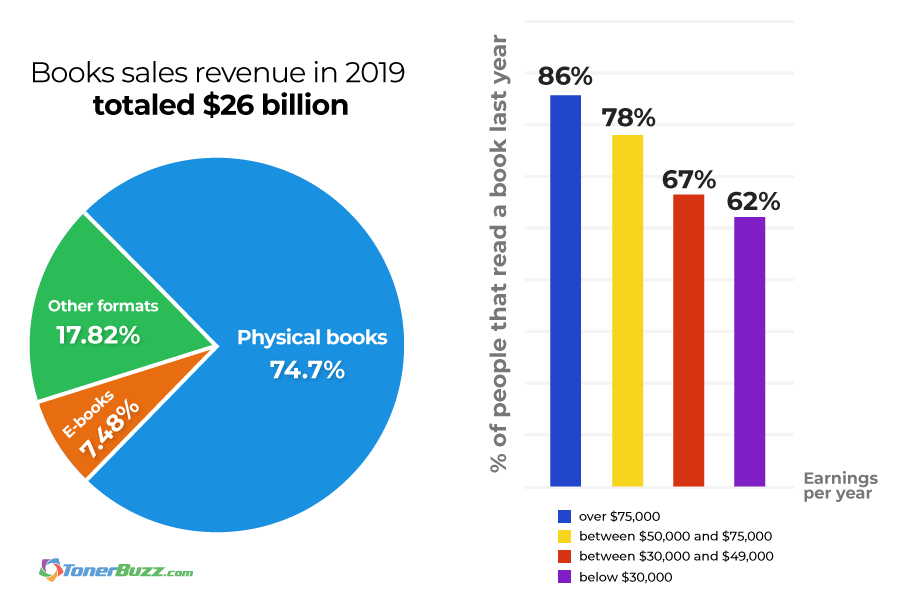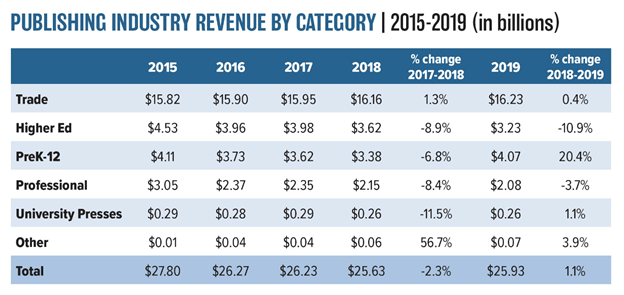From TonerBuzz:
Paper books vs eBooks statistics show print is here to stay!
Dead Tree Editions Just Won’t Die!
Like the monster in a horror movie, print books just won’t die. The most recent paper books vs eBooks statistics, research, and surveys back this up.
Print books are here to stay!
Let’s look at the most important eBook vs print book statistics, key differences between print and e-books, and where American publishers are taking the industry.
Popularity Contest: Books Versus Print Books
Are print books still popular? You’d better believe it!
According to a survey conducted by the Pew Research Center on book consumption and book formats, traditional print is still the most popular reading format for both adults and children.
Survey says:
- 72% of adults in the United States read a book in some format over the last year
- 65% of respondents claimed they read a book in the last 12 months
- 37% of Americans claim they only read print books
- 28% say they read both print books and e-books
- 7% say they only read e-books

Demographics: Reader vs E-Reader
Book reading demographics vary according to education and income level.
College graduates make up 90% of book readers, while only 61% of high school graduates read books.
Those who dropped out of school have an even lower readership rate – a mere 32%.
Economics goes hand-in-hand with education. Individuals earning over $75,000 a year make up 86% of readers, while well those earning less than $30,000 annually make up only 62%.
Physical books are still the top moneymakers for publishers.
Publishing market research shows the economic juggernaut of traditional books. While publishers are experimenting with different media formats — especially audiobooks — they are still investing the bulk of their marketing efforts into physical book sales.
And they should…there’s still big money in old-fashioned publishing!
- Books sales revenue in 2019 totaled $26 billion
- Physical books generated 74.7% of the total revenue
- E-books accounted for only 7.48% of the revenue
- The remaining part of the revenue was generated by other formats like audiobooks


Source: The Association of American Publishers (AAP)
Link to the rest at TonerBuzz
PG notes that TonerBuzz is an ecommerce seller of toner and ink.
Re: The Benefits of Print Books
People like them on their shelves or displayed elsewhere. Note that KDP is adding hardcover printing.
Expensive decor.
This should do the job just fine for much less in the age of Zoom.
https://us.amazon.com/Yija-Self-Adhesive-Bookshelf-Peel-Stick-Backsplash/dp/B07LGPCFSN/ref=mp_s_a_1_3?crid=26VZCI8WTQS17&dchild=1&keywords=book+wallpaper&qid=1633881805&sprefix=book+wa&sr=8-3
I love the final bullet: “PLEASE NOTED: Buy enough rolls at a time to make sure they come from the same batch to avoid color difference.” In case you want to a whole wall. No actual books required.
Two other notes:
#1 – Never, ever look at revenues when evaluating the health of a business. The first cut is to look at their gross margin. The first is essentially cash in – the second is cash in less cash out. If they aren’t getting at least as much cash in as they’re sending cash out, they’re heading for bankruptcy court, no matter how big the first number is.
#2 – While the OP doesn’t show 2020 – their chart shows a 1.1% increase in revenues in 2019. While I can’t easily find a number for inflation in just the publishing industry, that is quite a bit less than the CPI in 2019, which was 1.76%. That is a decrease in real revenue.
Addendum – I thought this might have been an old article, which would have explained the numbers only through 2019. Nope, the OP is dated in April of this year. Hmm…
About number 2: That is the industry standard. They *never* report inflation-adjusted (or merger-adjusted) numbers. Mostly because the numbers would be embarrasing.
Check this table:
https://inflationdata.com/Inflation/Inflation_Rate/HistoricalInflation.aspx#table
From a modern business standpoint, impossible. You would have to separate out where the revenues end up going – and then calculate by region (not even country – for instance, the inflation rate in California is approximately one and a half times that here in Arizona). An accounting nightmare.
But, yes, they would be embarrassing in many industries.
True…
…if you want fine grained investment-grade numbers.
But theirs aren’t. They’re geographically and format aggregated to hide their weaknesses. Those kinds of numbers are adequately judged against the national inflation rate (1.5-3.5%) to deflate any claims of growth.
They’re locked into a “genteel” stagnancy that lets them hold up a facade of adequacy. The reality is that unlike pretty much every other business they don’t have to worry about hungry startups coming in to try to eat their lunch because there is no lunch to take away. Stagnancy (and Amazon) are their perfect protection against competition. As long as they can feed the maw of their rent-seeking overlords, they don’t actually need growth. Any pretense of same is just posturing.
No lunch to take away – well put. But Amazon is busy hoovering up the crumbs – note that they are now doing hardcover POD. As of yet, not quite to the point of completely replacing what a commercial printer puts out: you can’t have your book slip covered, with embossing and foiling – but a year or two from now? I’ve seen some hints about technology to make extremely short runs affordable there.
Of course, if – as we’ve discussed elsewhere – supply chain issues are not resolved down to fairly low profit margin levels, people like the OP may find themselves forced to make a deal with the Devil. Getting chips for the Kindles are certainly going to be a higher priority for Amazon than paper for the POD machines.
If we’re going to stick with the cafeteria talk, Amazon is going after breakfast. Specifically: Ingram and folks going wide.
I doubt foils and fancy formats are an immediate goal; the way Amazon works, getting cost of the hardcovers is a bigger priority to allow Indies to undercut trapub.
Hmm… when the final of my Neanderthal trilogy is done (Dec), maybe I should consider a Hardback Omnibus on top of the EBK + PBK series??? Hmm…